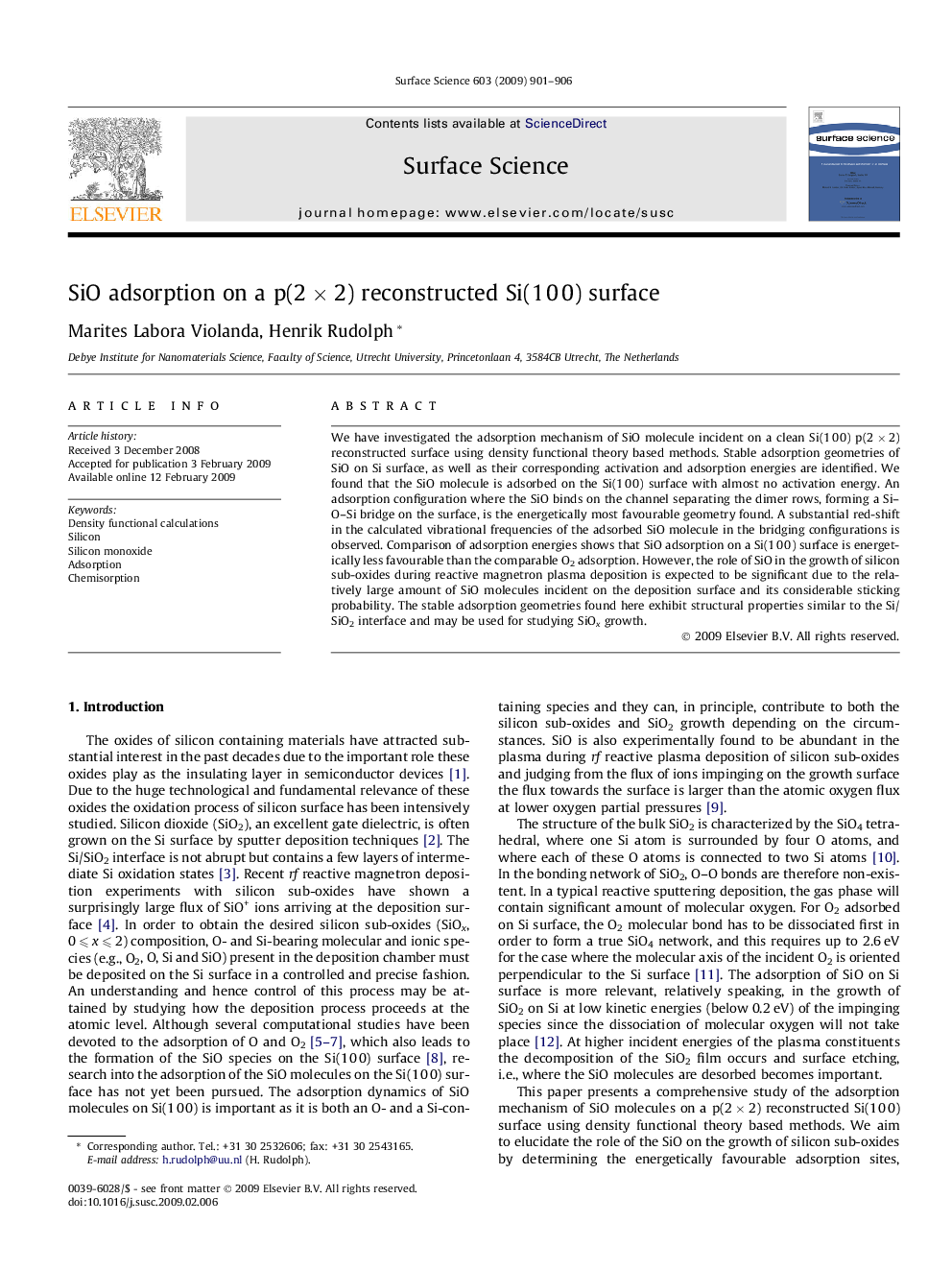| Article ID | Journal | Published Year | Pages | File Type |
|---|---|---|---|---|
| 5424087 | Surface Science | 2009 | 6 Pages |
Abstract
We have investigated the adsorption mechanism of SiO molecule incident on a clean Si(1Â 0Â 0) p(2Â ÃÂ 2) reconstructed surface using density functional theory based methods. Stable adsorption geometries of SiO on Si surface, as well as their corresponding activation and adsorption energies are identified. We found that the SiO molecule is adsorbed on the Si(1Â 0Â 0) surface with almost no activation energy. An adsorption configuration where the SiO binds on the channel separating the dimer rows, forming a Si-O-Si bridge on the surface, is the energetically most favourable geometry found. A substantial red-shift in the calculated vibrational frequencies of the adsorbed SiO molecule in the bridging configurations is observed. Comparison of adsorption energies shows that SiO adsorption on a Si(1Â 0Â 0) surface is energetically less favourable than the comparable O2 adsorption. However, the role of SiO in the growth of silicon sub-oxides during reactive magnetron plasma deposition is expected to be significant due to the relatively large amount of SiO molecules incident on the deposition surface and its considerable sticking probability. The stable adsorption geometries found here exhibit structural properties similar to the Si/SiO2 interface and may be used for studying SiOx growth.
Related Topics
Physical Sciences and Engineering
Chemistry
Physical and Theoretical Chemistry
Authors
Marites Labora Violanda, Henrik Rudolph,
